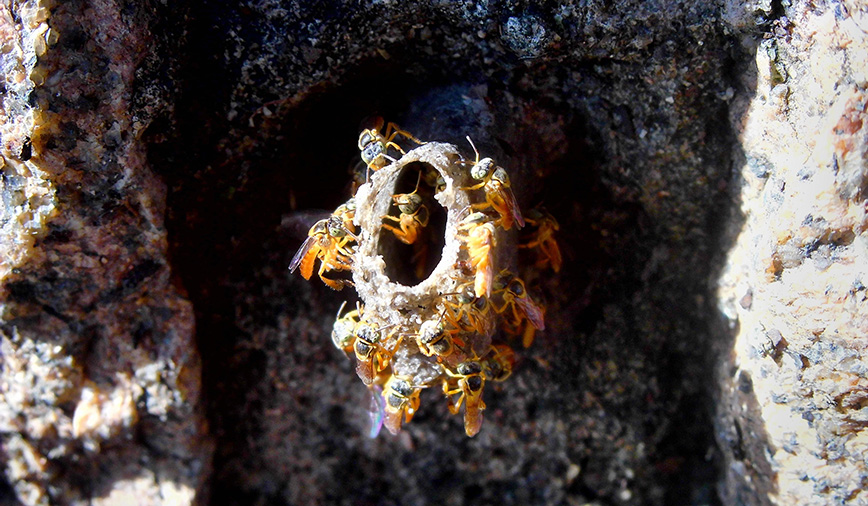Some people attract wildlife to their yards by hanging up birdhouses. But this weekend, I’m putting up a bee house.
That’s right. Bees. Those insects which are, for the most part, peaceable and mild, yet have an undeserved reputation for being cantankerous and hostile. The ones that supposedly sting every chance they get, but in reality usually opt to keep to themselves. The ones we can thank for the flowers in our yards and the food on our tables, for without bees and other pollinators, life as we know it would not exist.
It sounds like an exaggeration, but really it’s not. Three-fourths of the world’s flowering plants depend on animal pollinators to help them complete their life cycles. Many of these plants are vital links in our food supply chain. It’s estimated that one of every three bites of food you take can be traced back to the work of a pollinator.
Granted, pollinators are found in many forms, including insect, bird and mammal and, frankly, they could all use our help. But for right now, I’m focusing on bees.
Last week I went with my friend Valerie (Blaine, nature programs manager for the Forest Preserve District of Kane County) to Champaign-Urbana, IL, for a series of events held in conjunction with National Pollinator Week. The first workshop we attended, Nurturing Native Bees, was a real eye opener.
According to Cynthia McDonnell, one of the event organizers and a doctoral candidate in entomology at the University of Illinois, nearly 300 species of bees are native to Illinois. (This figure, by the way, does not include honey bees, which were imported from Europe.) The group spans a wide range, from the familiar bumble bee (11 species present in our state) to the lesser known families, including sweat bees, carpenter bees, plasterer bees, leaf cutter bees and mason bees—to name a few.
Some of these species are social and live in colonies, like honey bees and bumble bees do, while others are solitary. Some, like certain types of carpenter bees, build their homes in wood, while the majority (70%) make their homes in the ground.
Native bees’ requirements are few: a suitable habitat that provides shelter and food plants—all bees are vegetarians—are really all they need. In return, they provide the invaluable service of pollination, or fertilization, which allows plants to produce fruit and bear seeds.
Because native bees are better adapted to our local conditions, they offer several advantages over introduced species like honey bees. For one, native bees are active sooner, helping to pollinate plants that bloom in early spring. Various species show fidelity to specific plants, leading to more efficient pollination. And in many species, male bees also pollinate—a direct contrast to the behavior of male honey bees, known as drones, whose every need is catered to by the female worker honey bees.
But native bees’ simplistic yet helpful lifestyle is threatened by a number of factors. Habitat destruction has taken away lots of potential homes and food sources, and the habitat that is left is fragmented, with large spaces in between suitable sites. Broad-spectrum pesticides have taken their toll too, knocking out bees along with the so-called nuisance species the chemicals were meant to control.
Luckily, the workshops at U of I during National Pollinator Week provided lots of suggestions for counteracting these negative effects, such as:
Plant native species of wildflowers
Provide patches of bare ground for ground-nesting bees
Reduce or eliminate the use of pesticides
Monitor native pollinator populations (More info available at http://beespotter.mste.uiuc.edu)
And then there are the bee houses. I got mine from McDonnell, but plans to make your own are readily available on the internet at sites like http://www.attra.org/attra-pub/nativebee.html. Basically, a bee house is a block of wood with holes drilled in it; placed in a sunny location, it will provide nesting sites for a variety of solitary bee species.
The best time of year to put out a bee house is early spring, so I may have missed this year’s window of opportunity by a few months. But I’m going to try it anyway, just to see what might move in. Maybee I can beefriend a bee.
Pam Otto is the manager of nature programs and interpretive services for the St. Charles Park District. She can be reached at potto@stcparks.org or 630-513-4346.

